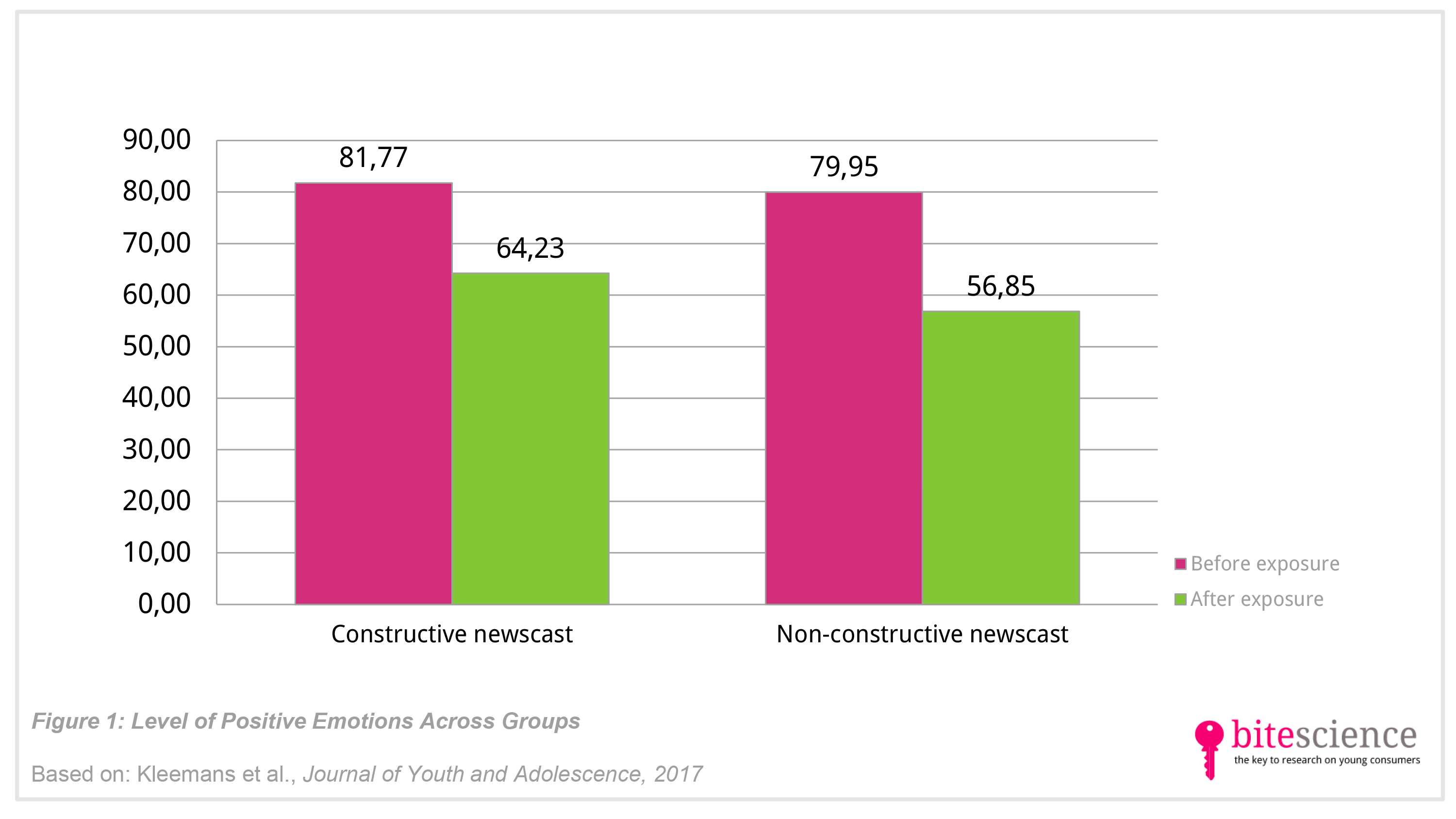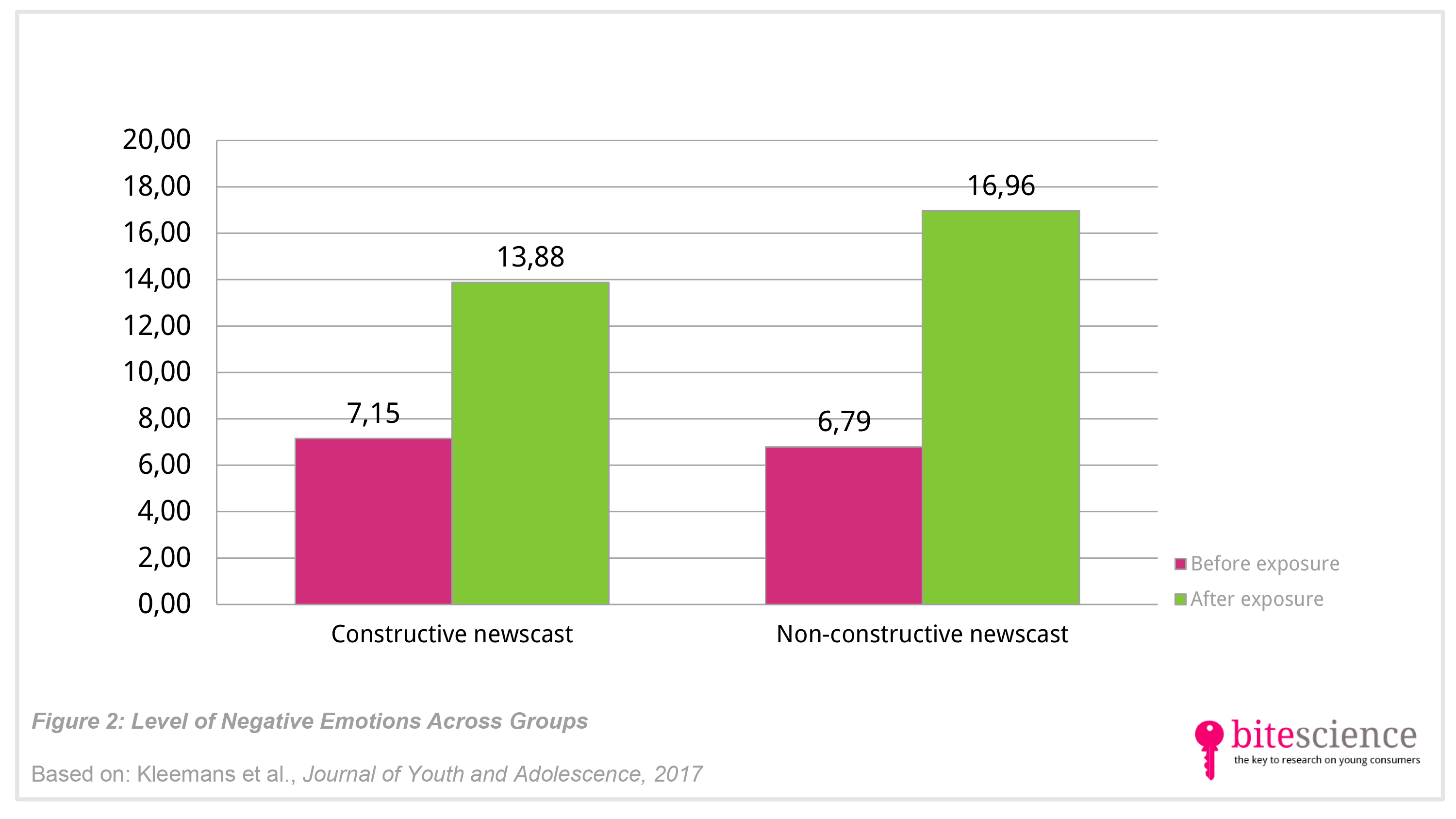
Constructive Journalism Makes Negative News More Child Friendly
News helps children to get a sense of what is happening in the world. However, many concerns have been raised about the predominantly negative stories in the news. Critics fear for harmful effects, such as being extremely anxious and having nightmares. A study in the Journal of Youth and Adolescence therefore investigated whether potential harmful effects of negative news can be reduced by framing negative stories in a more positive way, often referred to as constructive journalism. Findings reveal that constructive TV news indeed leads to less negative and more positive emotions in children.
Take aways
- Constructive TV news, in which negative news stories are brought in a more positive and solution-based way, leads to less negative and more positive emotions in children.
- Discussing constructive news items with peers can even lead to higher prosocial intentions, for example an increased willingness to help others.
- When children are exposed to non-constructive negative newscasts, peer discussion can help to reduce negative emotions.
- For journalists and news organizations, it’s good to know that there are tools to make negative news less harmful for children.
Study information
The question?
Can the constructive reporting of negative news lead to less negative emotions and more prosocial intentions in children? And what’s the role of peer discussion in this relationship?
Who?
336 9-13-year-old children (mean age: 10 years old; 49% were girls).
Where?
The Netherlands, Europe
How?
Children were exposed to either a constructive or a non-constructive newscast about the 2011 tsunami in Japan. The opening (general info about the tsunami) and the ending of both versions of the newscast were the same, however, the three items in the middle of the newscast differed:
- In the constructive newscast, the first item contained solution-based news (help is coming, people are saved). The second item showed an interview with children expressing positive emotions (grandparents in Japan alive and doing fine), and the third item focused on the survivors (dog found alive).
- In the non-constructive newscast, the first item contained problem-based news (search for missing persons is difficult). The second item showed an interview with children expressing negative emotions (sadness about not being able to visit grandparents), and the third item focused on the victims (lots of victims).
Both before and after exposure to the newscast, children’s positive (i.e., happiness, joy) and negative emotions (i.e., anger, madness, sadness, sorrow, fear and anxiety) were measured. After watching the newscast, the children also indicated their prosocial intentions (i.e., whether they wanted to help the people in Japan, give money to organizations, and/or wanted to start a campaign to help the people in Japan).
Finally, half of the children, also participated in a peer discussion about the news in groups of three or four. As a starting point, children were asked to write down their thoughts and ideas about the newscast. After two minutes, children were instructed to discuss this with the other members of the discussion group. After this, they were asked to select the three most important ideas that were discussed. At last, their emotions and prosocial intentions were measured again.
Facts and findings
- Compared to children who watched the non-constructive newscast, the children who watched the constructive newscast experienced:
- a lower decrease in positive emotions (see Figure 1);
- a lower increase in negative emotions (see Figure 2).
- There were no differences in how much children intended to help and donate moneybetween children who watched the constructive newscast and those who watched the non-constructive newscast.
- However, children who discussed the constructive newscast with their peers after viewing, did intend to help and donate more often.
- Children who participated in a peer discussion after watching the non-constructive newscast, displayed more positive emotions and less negative emotions than children who did not participate in a peer discussion.
- The positive effect of peer discussion on emotion states was not found for children who watched the constructive newscast. Thus, when children are already exposed to the more positively framed (constructive) newscast, a discussion afterwards makes no difference in their emotional responses.

